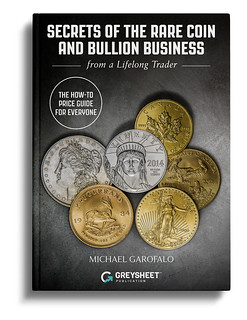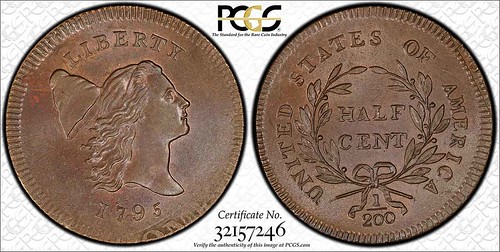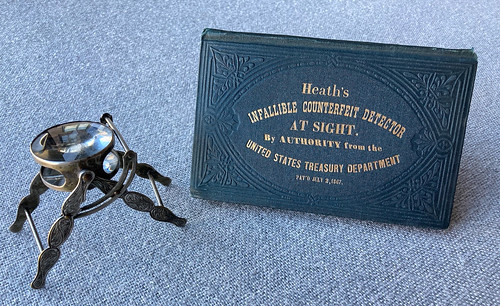
PREV ARTICLE
FULL ISSUE
PREV FULL ISSUE
LOOSE CHANGE: FEBRUARY 27, 2022Here are some additional items in the media this week that may be of interest. -Editor Here's a new book from CDN Publishing, LLC. It's in softcover format, but "is sold as an annual subscription. If you order the printed copy, you will receive the current soft-cover edition and online viewer access for 12 months after you purchase it." -Editor
To read the complete article, see:
Here's an article by Kyle Clifford Knapp on the PCGS site about Overstrikes, Multistrikes & Clashes. -Editor
Overstrikes are coins or tokens struck using an already struck example of a different issue as a planchet (then referred to as the undertype). This may occur inadvertently, but is most often intentional, with extant coins serving as a convenient and economic alternative to requisitioning a freshly manufactured batch of blanks. While an overstriking typically obliterates the majority of the undertype, this can frequently be identified via discernible remnants of the design in the fields, or on the edge. Such apparitions, such as the word In contrast to overstrikes, multistrikes are pieces struck more than once from the same die pair. If the planchet rotates within the collar or flips over between impressions, visually spectacular errors can be created. Die clashing is evidence of a permanent impression left on a die from its collision with another (usually mated) die without a coin in between to cushion the blow and absorb the design. In some series, such as the Three Cent Nickels from the middle of the 19th century, this is common, and such pieces command no premium. In other instances, they can be highly collectible. This 1857 Flying Eagle Cent obverse die was somehow clashed with the reverse die from a contemporary Liberty Seated Half Dollar, leaving dramatic evidence on the obverse: the projections from the eagle's beak, front wing, and tail are all clash marks and not at all detrimental to the grade.
To read the complete article, see:
The American Numismatic Society recently acquired one of Laban Heath's Improved Adjustable Compound Microscopes, promoted as a tool for examining bank notes. Here's ANS Librarian David Hill's Pocket Change article about it. -Editor
The ANS Library and Archives recently acquired an interesting little gadget—one of Laban Heath's Improved Adjustable Compound Microscopes. Patented by Heath in 1877, he sold it primarily as a tool for examining bank notes— These publications—bank note reporters and counterfeit detectors—arose at a time when state and territorial banks, large and small, scrupulous and not, were permitted to issue their own bank notes, exchangeable for silver or gold. The resulting variety of notes made the counterfeiter's job much easier. And the actual value of the notes varied from place to place, regardless of the face value. In fact, a note might circulate from a bank that no longer existed. Bank note reporters and counterfeit detectors helped people make sense of it all.
To read the complete article, see:
Wayne Homren, Editor The Numismatic Bibliomania Society is a non-profit organization promoting numismatic literature. See our web site at coinbooks.org. To submit items for publication in The E-Sylum, write to the Editor at this address: whomren@gmail.com To subscribe go to: https://my.binhost.com/lists/listinfo/esylum All Rights Reserved. NBS Home Page Contact the NBS webmaster 
|


